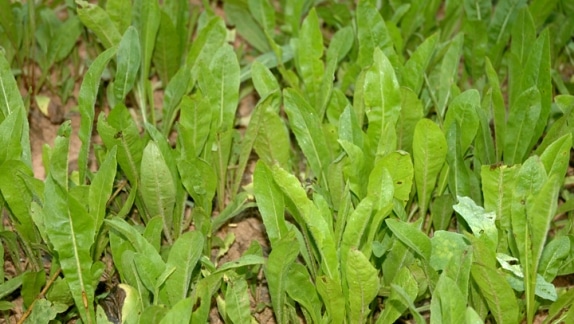
For a change of pace, try growing chicory – a tough cool-season perennial crop that is a preferred deer forage – in your next fall food plot.
This nutritious broadleaf crop is actually in the sunflower family, but looks more like the common weed plantain. Chicory is an herb and develops a rather deep tap-root that prefers loamy, well-drained soils. While chicory was originally used as a coffee substitute, it has now become a dynamic tool in food plots for land managers. The leaves of chicory are highly digestible and carry a protein level of anywhere between 15 and 30 percent. Chicory is quickly becoming a favorite among landowners and hunters due to its ability to tolerate acidic soils, withstand drought, and crowd out potential weed competition. Deer also seem to be quite fond of it.
Chicory is an adaptable crop that can be grown throughout the country. Planting can take place as early as August in northern climates or September to early October in the Deep South. Plant chicory at a seeding rate of 4 to 5 lbs./acre broadcast or 2 to 3 lbs./acre drilled. This seed does best when planted to a depth of 1/8- to 1/4-inch deep. Take care not to bury the seed too deeply, or else germination will suffer. Chicory should be planted in full sun and will not tolerate much shade. Soil test to determine fertility needs, or apply 250 pounds of 19-19-19 per acre. Lime fields according to a soil sample to raise the pH to an ideal of 6.5. After planting, broadcasted seed should be lightly raked and cultipacked for best seed-to-soil contact and germination.
With enough moisture, chicory food plots can persist for several years and will continue to draw deer to this tasty herb. Maintenance on chicory is minimal. In the summer, as chicory plants begin to sprout flowering stems, mow the stem down to encourage new leaf growth. This periodic mowing is important to discourage the reproductive process of the plants and direct nutrients into forage production rather than stem and flower production. Plots may need to be mowed a couple of times during the summer months to discourage bolting (flowering). Additional nitrogen applied after establishment of the chicory plot will help ensure the maximum production of forage. Under careful management, chicory can produce several tons of digestible forage per year. My experience with chicory is that once the deer discover what it is, they find it highly attractive.
While chicory can be planted as a stand-alone crop, I find it works best when planted in mixes with annual cereal grains and/or a legume like clover. In the extended “Food Plot Species Profile” in Quality Whitetails magazine, I will go into more detail on specific blends and additional management practices for successfully growing chicory. Get much more information about deer and habitat management, and support NDA’s mission, by joining today.






![Air gun 101: The differences between .177 & .22 – Which jobs they do best ? [Infographic]](https://airgunmaniac.com/wp-content/uploads/2020/09/g44-218x150.jpg)








































